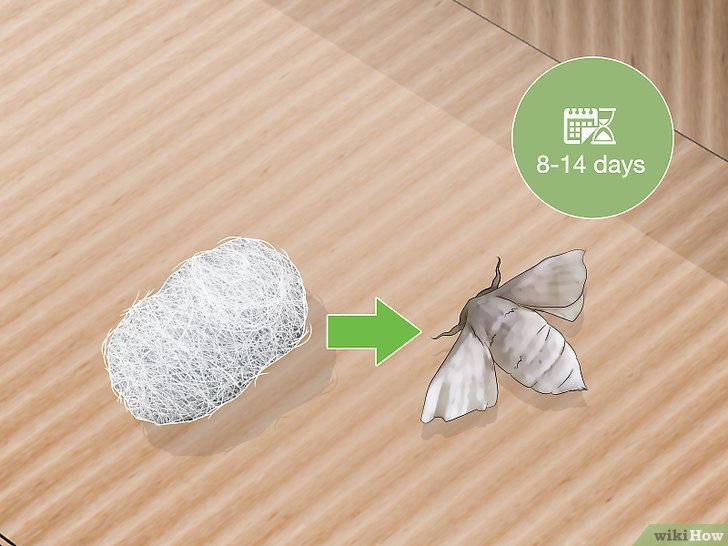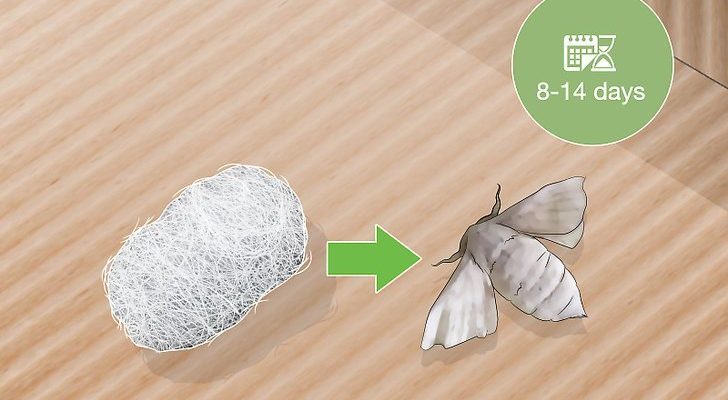
Here’s the thing: you don’t need to be a biology expert to get started. Breeding silkworms can be a rewarding venture for anyone curious about the world around them. With the right environment, food, and a few helpful tips, you can cultivate your own silkworms right at home. In this guide, I’ll walk you through the entire process, ensuring you have all the information you need to be successful.
Understanding the Life Cycle of Silkworms
Before you start breeding silkworms, it’s crucial to understand their life cycle. This cycle consists of four main stages: **egg**, **larva**, **pupa**, and **adult moth**. Each stage has its specific needs and characteristics, much like different phases in human life.
1. **Egg Stage**: This is where it all begins. Silkworm eggs are tiny, and you can expect them to hatch within about 10 days to 2 weeks, depending on the conditions. They thrive best in temperatures between 20-25°C (68-77°F). Keep them in a well-ventilated environment away from direct sunlight.
2. **Larva Stage**: When the eggs hatch, they become larvae, or caterpillars, which are the stars of this show. They will grow rapidly, needing plenty of food, specifically mulberry leaves. During this stage, they can go through several molts, shedding their skin to allow for growth. It’s like watching your kids grow up—they just keep needing more and more!
3. **Pupa Stage**: After about 30 to 45 days, the silkworms will stop eating and begin to spin a cocoon. This stage is crucial because it’s where they transform into pupae. Make sure they have a cozy, quiet space to perform this magical process.
4. **Adult Moth Stage**: Finally, after a couple of weeks inside their cocoons, they emerge as adult moths. These moths don’t eat and have a short lifespan, primarily focusing on mating and laying eggs. The cycle then starts over, and you can see how interconnected it all is.
Setting Up the Perfect Environment
Creating the right environment for your silkworms is key to successful breeding. If they feel comfortable and safe, they’ll thrive. Here’s how to set it up:
1. **Temperature Control**: Silkworms love a warm temperature, typically between 25-28°C (77-82°F) during the larval stage. You might consider using a small heater or heat mat to maintain a consistent temperature.
2. **Ventilation**: Good air circulation is vital. You can use a mesh lid or keep the container open slightly to allow fresh air, but avoid direct drafts. Think about how you feel in a stuffy room—your silkworms feel the same!
3. **Cleanliness**: Keep their environment clean. Regularly remove waste and any uneaten leaves. A clean habitat helps prevent diseases, ensuring your silkworms grow healthy and strong.
4. **Space**: As they grow, they need more room. Start them in a small container, but be ready to move them to larger enclosures as they grow. It’s like moving from a cozy studio apartment to a spacious home—everyone appreciates a bit of extra room!
Feeding Your Silkworms
Feeding is one of the most vital aspects of raising silkworms. They are voracious eaters, and a good diet leads to strong, healthy creatures. Here’s how to make sure they’re well-fed:
1. **Mulberry Leaves**: Fresh **mulberry leaves** are the best food for silkworms. If you don’t have access to mulberry trees, you can purchase dried leaves or specialized silkworm chow. Just remember that fresh is always better, so if you can grow your own, that’s fantastic!
2. **Quantity**: When they’re young, they’ll eat a lot—up to their body weight each day. As they get older, their appetite increases even more. Keep an eye on them and always have plenty of leaves available—like a buffet, they’ll keep coming back for more!
3. **Water**: Silkworms get moisture from their food. However, it’s essential to keep their environment humid. You might mist the leaves lightly, but be careful not to soak them. Think of it like a gentle spring rain—just enough to keep the grass green and happy.
Monitoring Health and Growth
As your silkworms progress through their life stages, monitoring their health is crucial. Here’s what to look out for:
1. **Color Changes**: Healthy silkworms are usually a creamy white or yellowish color. If you notice any dark spots or unusual colors, it could indicate a problem. Don’t hesitate to research further or seek advice from online forums or communities.
2. **Behavior**: Keep an eye on their eating habits. If they stop feeding or seem lethargic, that could be a sign that something is off. Just like a friend who’s feeling under the weather, your silkworms might need a little extra care.
3. **Growth Rates**: Monitor their growth. The larval stage lasts about 30-45 days, and they should be growing steadily. If they seem stunted or are not molting as expected, it could indicate an issue with their environment or diet.
Harvesting Silk
Once your silkworms have spun their cocoons, it’s time for the magic of silk harvesting. This is the exciting part that many people look forward to!
1. **Cocoon Collection**: After about 2-3 weeks as pupae, the cocoons will be ready for harvest. Carefully collect them, ensuring not to damage the silk threads. This process is like gathering precious gems—handle with care!
2. **Boiling the Cocoons**: To extract the silk, you’ll need to boil the cocoons in water. This step kills the pupae inside and helps to loosen the silk fibers. Be sure to do this gently; you don’t want to unravel the silk too quickly.
3. **Spinning the Silk**: Once boiled, you can start unwinding the silk threads. This requires patience, as the threads can be delicate. It’s kind of like unrolling a roll of yarn—take your time and enjoy the process!
4. **Drying the Silk**: After harvesting, the silk needs to dry completely before using or storing it. Lay it out in a cool, dry place, avoiding direct sunlight.
Common Challenges in Silkworm Breeding
Like any hobby, breeding silkworms can come with its challenges. Here are a few to watch for:
1. **Pest Issues**: Sometimes, pests can invade your silkworm habitat. Keeping things clean and well-ventilated can help prevent this, but be prepared to act quickly if you spot any unwanted visitors.
2. **Diet Problems**: If silkworms are not eating well, it might be due to poor-quality leaves. Always ensure you’re providing the best food possible. Think of it like feeding a picky toddler—only the best will do!
3. **Temperature Fluctuations**: Sudden changes in temperature can stress silkworms. Keep a thermometer handy to monitor their environment and make adjustments as needed.
4. **Disease**: Unfortunately, silkworms can get sick, too. If you notice a lot of deaths or unusual behaviors, seek help from dedicated silkworm communities online. They can offer advice and support.
In conclusion, breeding silkworms is a delightful and educational experience. With the right knowledge and preparation, you can successfully raise these fascinating creatures. Not only will you enjoy watching their life cycle unfold, but you’ll also have the opportunity to harvest silk—a tangible product of your efforts. So, grab your mulberry leaves, set up your environment, and let nature do its magic. Happy breeding!

